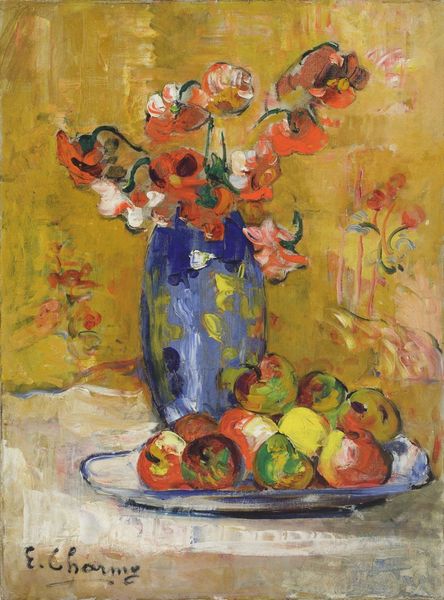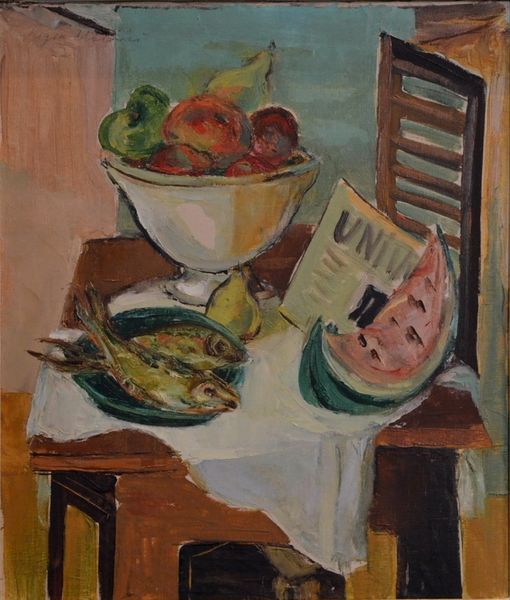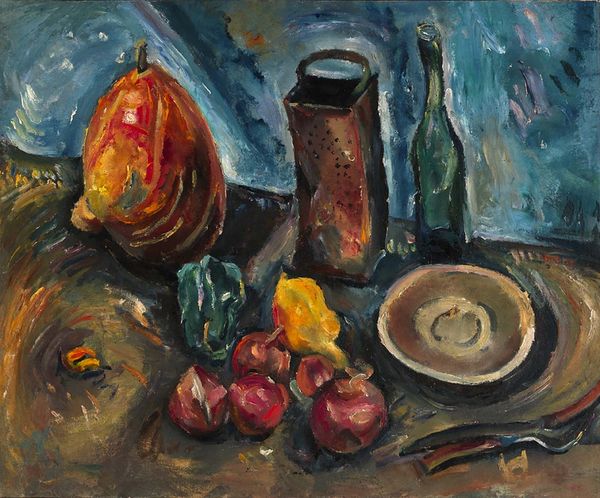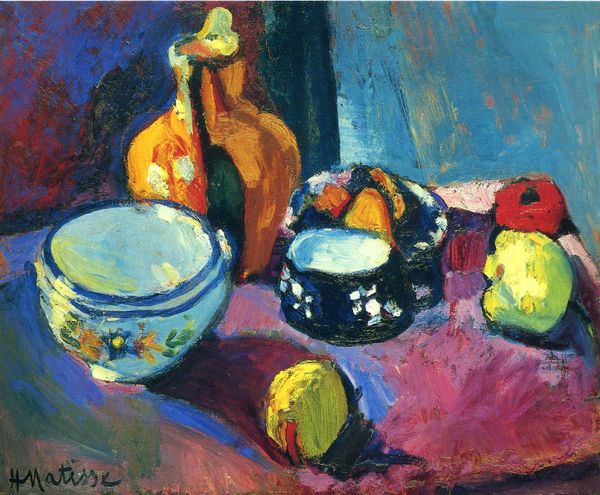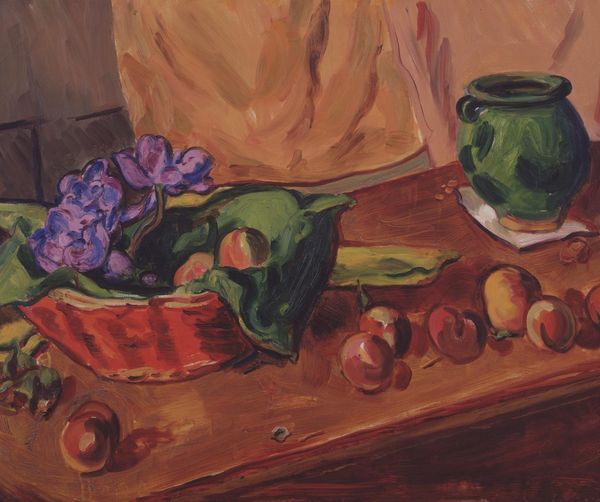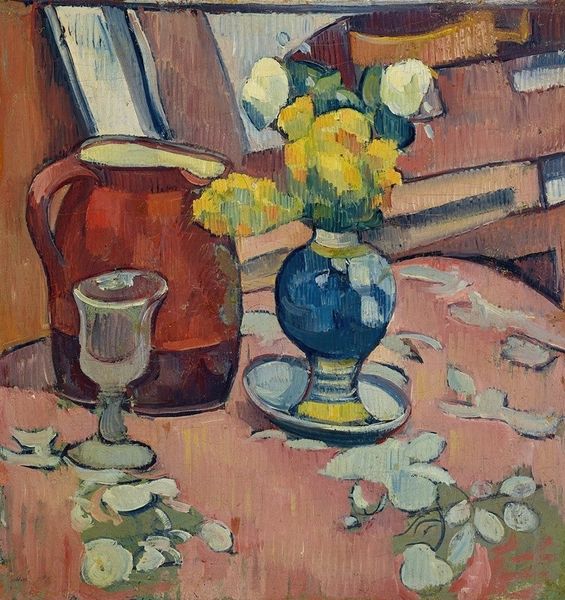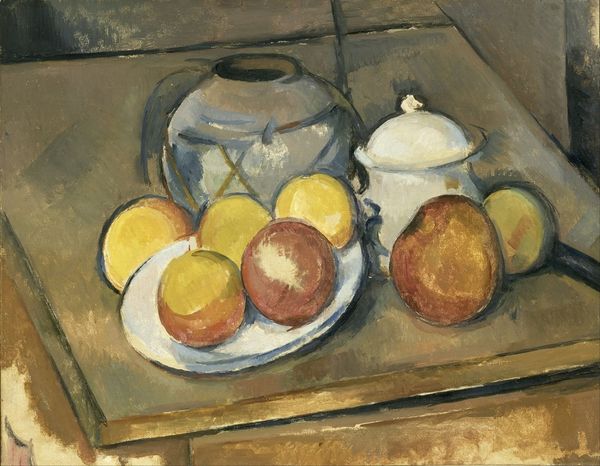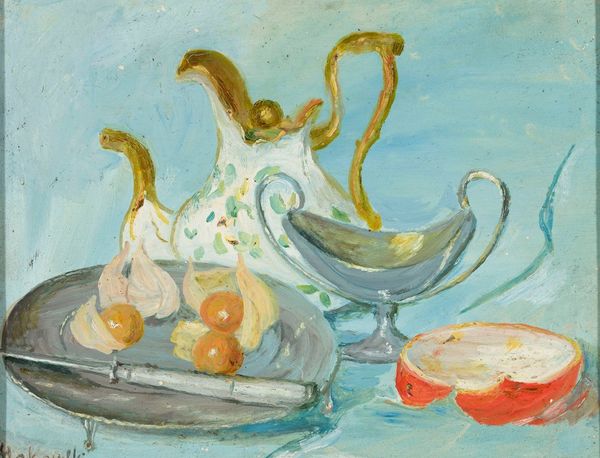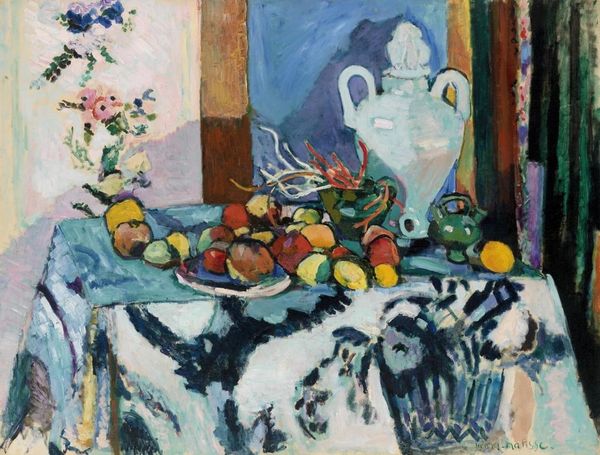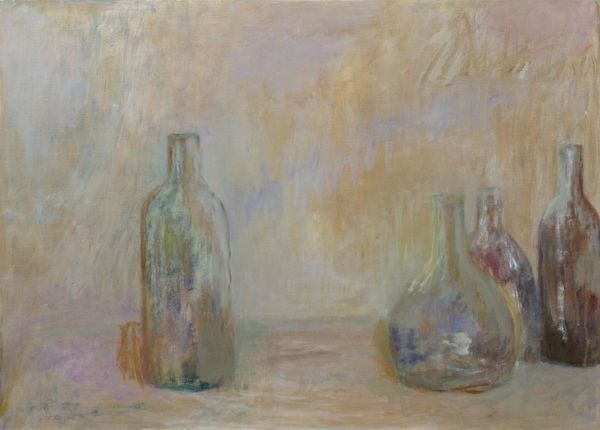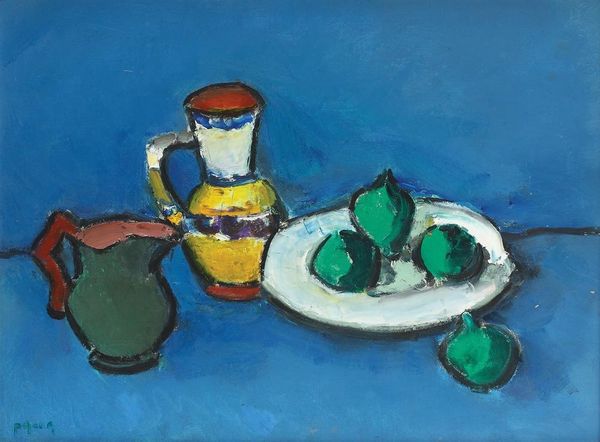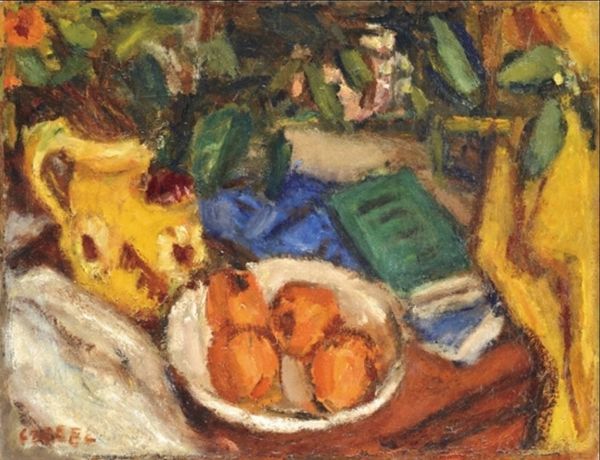
Copyright: Public domain
Curator: Immediately, I'm struck by the almost mournful quality, the subdued palette... It's a still life, but infused with a distinct melancholic feeling. Editor: Indeed. Let’s delve into "Still Life," an oil painting crafted by Harriet Backer in 1916. She was a Norwegian artist known for her contributions to Post-Impressionism and Modernism, and her works often capture quiet domestic interiors. Curator: The juxtaposition is fascinating. The delicate blooms and fruit imply transient beauty, but then there's that stark plaster bust. Is it a death mask, a child's effigy? Editor: Interesting, your insight into symbols here… The bust introduces a historical element, invoking ideas of tradition, perhaps of artistic legacy and influence. Consider the context: it's 1916, smack dab in the middle of World War One. Does the imagery signify innocence in the face of such an immense world war? Curator: Absolutely! Backer might be playing on that precise contrast. Roses, fruit, items we associate with warmth and nourishment are cast with a quiet grimness when viewed through the somber mask, and set behind that abstract patterned backcloth! Perhaps it serves as a lament for lives lost, or innocence taken during wartime? Editor: Exactly. Moreover, one may wonder about the politics of artistic representation during the interwar period. This artwork becomes particularly fascinating when you start to interpret and understand how the painting and presentation itself functioned as an emotional signifier. Did that abstraction have a more powerful emotive effect than any historical portrayal of the reality of the time? Curator: The brushwork reinforces this emotional ambiguity, loose and suggestive. Look at how the glass in the corner becomes simply planes of light… nothing truly stands grounded. Everything seems to exist within an emotive ether. Editor: And those brushstrokes help root it within a certain art-historical tradition. You are also correct to point to the treatment of the glass, typical of other Post-Impressionist works. Curator: I agree with that summation. Looking at it from my vantage point, "Still Life" is not just a rendering of objects; rather, it embodies loss and remembrance communicated through the iconography and treatment of something otherwise simple. Editor: For me, I observe in "Still Life," the powerful and perhaps even understated ability of Backer's artwork to resonate within that interwar cultural landscape, laden with bereavement. I wonder how it was first exhibited to audiences; such artworks, I imagine, provoked difficult thoughts around mortality and societal shift.
Comments
No comments
Be the first to comment and join the conversation on the ultimate creative platform.
